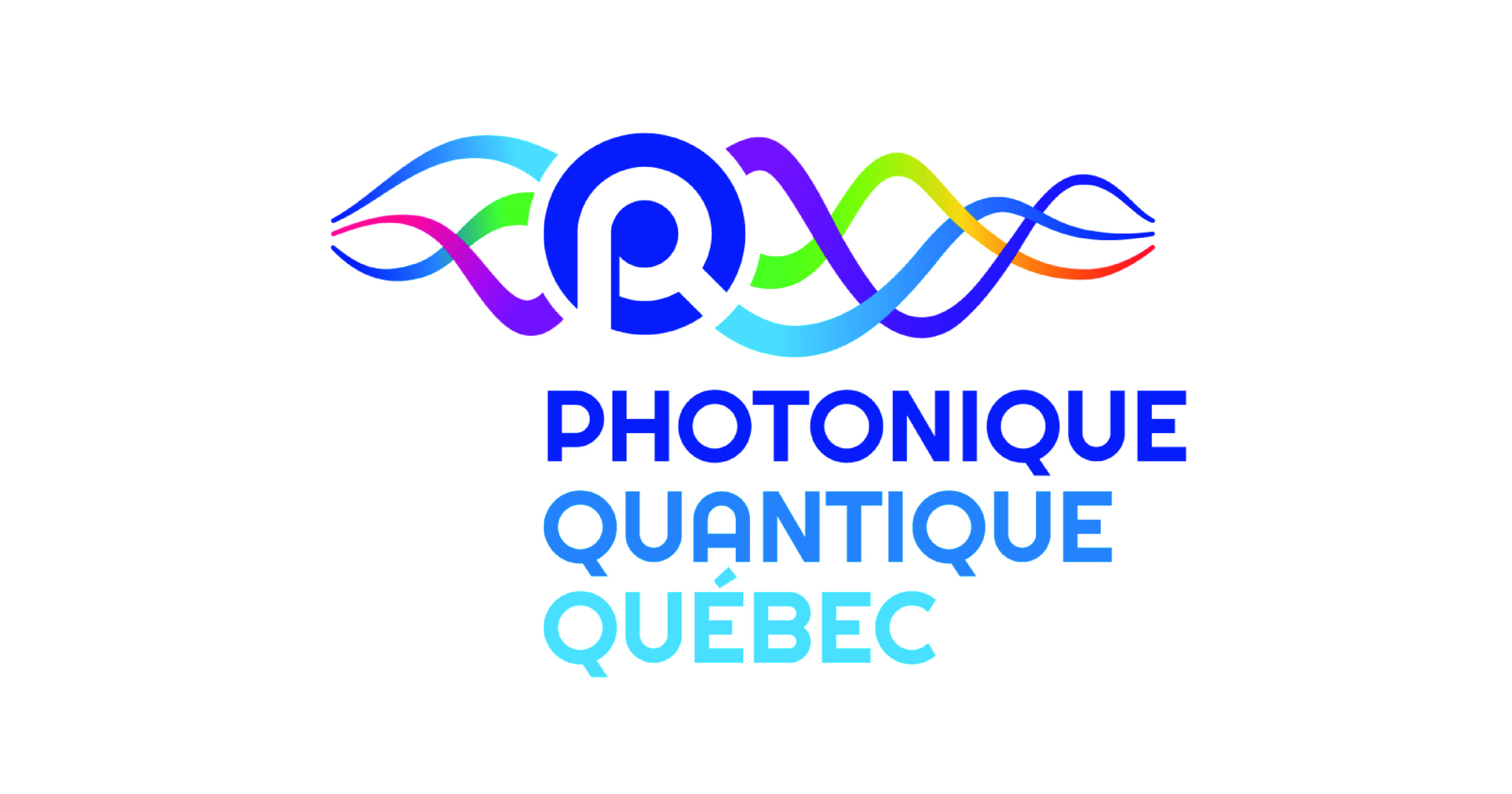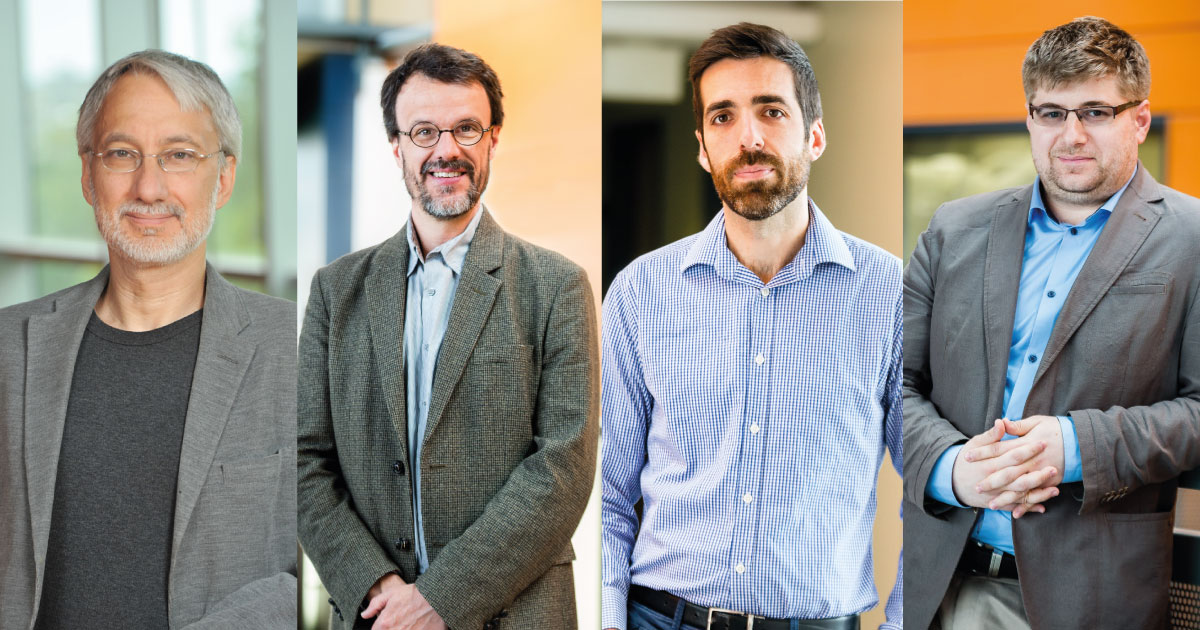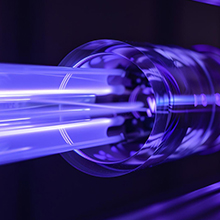Nouvelles
Quantum Photonics Quebec: over $377,000 awarded to three projects Polytechnique-led that advance innovation in quantum photonics
Quantum Photonics Quebec (PQ2), a collaborative initiative established by Polytechnique Montréal with the support of the Ministère de l'Économie et de l'Innovation (MEI) and led in collaboration with the Institut national de la recherche scientifique (INRS) and the Universities of Laval, McGill, Montréal and Sherbrooke, have announced funding for nine transdisciplinary projects that advance quantum photonics innovations. Three projects led by Polytechnique professors Nicolas Godbout, Stéphane Kéna-Cohen and Denis Seletskiy share funding totaling $377,004, and several Polytechnique faculty members are also collaborating on research projects that have received financial support from PQ2 and MEI.

The objective of PQ2 is to support collaborative research and to help Québec research teams solve large-scale scientific and technological challenges. In accomplish this, PQ2 reaches out to those in Québec’s innovation chain and directly finances a varied portfolio of activities in quantum photonics - at all stages of technological maturity - by addressing large-scale and strategic themes for the development of the field, its applications and its short- and long-term benefits for Québec’s economy.
In its first call for projects in June 2021, PQ2 received project proposals from 15 Québec-based research teams comprising over 40 researchers. Projects were evaluated by a committee of experts comprising five international researchers. Once recommended by the aforementioned committee, the PQ2 governance board (chaired by François Bertrand, Vice President of Research and Innovation at Polytechnique Montréal) approved funding for nine high-impact projects in quantum photonics.
"These nine projects combine Québec's strength in optics-photonics with a rapidly emerging field wherein we are already making our mark: quantum optics. We want applications to emerge from these research projects that will enable companies to innovate across several important sectors, such as artificial intelligence and life sciences," notes Pierre Fitzgibbon, Minister of Economy and Innovation and Minister Responsible for Regional Economic Development.
"The international expert committee noted that there were very high caliber projects under consideration; these successful projects will permit Québec’s research teams to accelerate the emergence of discoveries and innovations, to facilitate a quantum shift in Québec’s photonics industry. We were impressed by the quality of the research teams - made up of university and industrial researchers - as well as by the wealth of their expertise. Equipped with new means to face the important international competition, we’re certain that these teams will conquer even more ambitious challenges in this emerging technological field," commented Sébastien Francoeur, PQ2 Director and Professor in the Department of Engineering Physics at Polytechnique Montréal.

From left to right, Professors Sébastien Francoeur, Nicolas Godbout, Stéphane Kéna-Cohen and Denis Seletskiy.
Below follows a description of the three projects led by researchers from Polytechnique Montréal that received support from PQ2 and MEI:
Bright fibre sources of entangled photos
Researcher: Professor & Chair of the Department of Engineering Physics Nicolas Godbout
Optical imaging and metrology are limited in resolution and noise by the quantum nature of light and matter. Paradoxically, this same quantum nature allows us to overcome these limitations with non-classical sources, as for example in the LIGO interferometer for the detection of gravitational waves.
We often associate the quantum nature of light with its granularity and expect it to exist only when counting individual photons. Yet, it is very possible to design non-classical sources with macroscopic photon streams.
Potential applications of this technology include spectroscopy of matter, tomography of quantum states of light, and optical coherence tomography, a biomedical imaging modality that can be used in vivo with small fibered capillary probes, which will be the first demonstration of the benefits of our bright source of entangled photons.
Led by Professor Nicolas Godbout, in collaboration with Professor Caroline Boudoux of (Polytechnique - Department of Engineering Physics), and Professor Younès Messaddeq (Université Laval), the project team will receive $118,430 for its research activities.
Quantum Fourier transform infrared spectrometer (q-FTIR)
Researcher: Associate Professor Denis Seletskiy - Department of Engineering Physics
A multitude of fundamental resonances in matter lie in the infrared spectral region, for example collective modes in solids (phonons) and vibrational rotational structures in liquids and gases. These features are traditionally identified by means of a Fourier transform infrared (IR) spectrometer (FTIR), which obtains the absorbance of the analysis through a spectral analysis of its IR transmission, requiring, for slow detectors, access to the autocorrelation optical signal. The inherent simplicity of these classical spectrometers makes them ubiquitous in research facilities and field applications, such as airport security or space detection.
The research team’s main motivation is to leverage the advantages of quantum photonics for a next-generation FTIR spectrometer (q-FTIR) - with a dramatic improvement in performance.
The project is led by Professor Denis Seletskiy, in collaboration with Professor Sébastien Francoeur (Polytechnique - Department of Engineering Physics) and Professor Réal Vallée, (Université Laval), and will receive $128,510 in support.
An active rear-earth systems: a brige between microwave and visible
Researcher: Associate Professor Stéphane Kéna-Cohen - Department of Engineering Physics
Quantum communication systems rely on the ability to generate, manipulate and store quantum states of light. The simplest example is a series of light pulses where each pulse contains no more and no less than a single photon. These technologies already allow the transmission of ultra-secure information, using an algorithm developed at the Université de Montréal.
In the future, quantum communication networks will permit the implementation of distributed quantum computation and the development of distributed ultrasensitive quantum sensors. A unique feature of quantum information is that it cannot be cloned. This strength is also a challenge for the implementation of large-scale networks due to the intrinsic losses in optical fibers. To overcome this challenge, the development of quantum repeaters is essential.
To this end, one of the most promising platforms is rare earths. These materials interact strongly with light and allow the storage of quantum information in their spin. This research project aims to develop a quantum repeaters platform based on the use of rare earths operating at a wavelength compatible with existing fiber optic networks. Rather than using massive crystals as is currently the case, the team is seeking to develop polycrystalline thin films that can be combined with silicon-based optical chips.
The project is led by Professor Stéphane Kéna-Cohen, in collaboration with Full Professor Ludvik Martinu and Assistant Professor Sean Molesky,(all, Polytechnique - Department of Engineering Physics), and Professor François Schiettekatte (Université de Montréal) and will receive $130,064 of funding support.
Numerous collaborations in quantum photonics projects for Polytechnique’s researchers
Additionally, numerous Polytechnique Researchers are collaborating in the project listed below, which have been supported by PQ2 and MEI:
ELOQUENT: Efficient, LOw-loss and scalable interconnects between integrated Quantum photonics dEvices and optical fibres for the development of quantum communication NeTworks
Quantum networks (consisting of embedded local nodes - sources of photons - interconnected via fiber optic infrastructure) can provide a revolutionary solution for secure communication, for example in the transmission of personal, banking and government data. However, two main bottlenecks prevent such a development: photon loss, and a lack of a robust interconnection between local nodes. This project will seek to address these issues by developing efficient, low-loss, scalable interconnections between quantum photonic chips and optical fibers - a crucial step towards the commercialization of secure quantum communication systems.
Full Professor Raman Kashyap (Polytechnique - Department of Electrical Engineering and the Department of Engineering Physics), is involved in this project led by Professors Roberto Morandotti, Luca Razzari, José Azaña, and Sharif Sadaf (all, INRS), in collaboration with Professor Pablo Bianucci Concordia University) and Professor Odile Liboiron-Ladouceur (McGill University).
Molecular engineering of interlayer exciton interactions via the quantum confined Stark effect
An important advantage of quantum photonics over other platforms for quantum technologies is that light interacts very weakly with its environment. This allows the quantum information stored in light to be preserved for a very long time. In quantum terminology, the “decoherence time” is long. However this advantage also comes with a significant challenge: in many contexts, to use a quantum state, it must be manipulated, and the weak interaction of light with materials makes this difficult.
Professor Kéna-Cohen’s research group at Poytechnique has recently identified an atomic bilayer that interacts very strongly with light, and allows strong effective interactions between photons. This interaction is accomplished through polarized electron-hole pairs created in the material. At present, this polarization is created randomly depending on the defects that are naturally present in the bilayer.
In a project led by Professor Emanuele Orgiu of INRS, self-assembled polar molecular layers will be fabricated on both sides of the atomic bilayers. This will significantly increase the degree of internal polarization, and consequently the interaction strength, as well as the reproducibility of the effect. By combining these layers with optical cavities, the team hopes to be able to generate photon interactions so strong that they will be sensitive at the single-photon scale.
Professor Stephane Kéna-Cohen is contributing his expertise to Professor Orgiu's project, which is being carried out in collaboration with Professors Fabio Boschini and François Légaré of INRS.
Topological quantum polaritonics
The discovery of topological phases of matter has profoundly revolutionized our understanding of condensed matter. Among other things, their influence has led to a deeper understanding of conduction plateaus in the quantum Hall effect, and to the prospect of building error-tolerant quantum computers. However, topological physics is not limited to electrons in solids, but can in fact be extended to all types of waves propagating in a periodic potential with precise symmetry properties.
This observation has led to the development of an emerging research field – “photonic topology” – which is actively exploring applications that have no equivalent in electronics. One of the most promising perspectives of this field is to extend its scope to the quantum regime. Considering that one of the main obstacles to scaling quantum devices is related to the extreme fragility of quantum states, topology is currently considered to be a very interesting resource to protect them from noise or other sources of decoherence. The above represents the main objective of this project, which seeks to generate quantum states of light in topologically protected systems.
Professors Stéphane Kéna-Cohen, Ludvik Martinu, Sean Molesky and research associate Bill Balouka (Polytechnique – Department of Engineering Physics Department), complete this project team, led by Professor Philippe St-Jean (Université de Montréal).
Congratulations to our researchers involved in these innovative projects!
Learn more
Professor Caroline Boudoux expertise https://www.polymtl.ca/expertises/en/boudoux-caroline
Professor Sébastien Francoeur expertise https://www.polymtl.ca/expertises/en/francoeur-sebastien
Professor Nicolas Godbout expertise https://www.polymtl.ca/expertises/en/godbout-nicolas
Professor Raman Kashyap expertise https://www.polymtl.ca/phys/en/raman-kashyap
Professor Stéphane Kéna-Cohen expertise https://www.polymtl.ca/expertises/en/kena-cohen-stephane
Professor Ludvik Martinu expertise https://www.polymtl.ca/expertises/en/martinu-ludvik
Professor Sean Molesky expertise https://www.polymtl.ca/expertises/en/molesky-sean
Professor Denis Seletskiy expertise https://www.polymtl.ca/expertises/en/seletskiy-denis
Department of Electrical Engineering website https://www.polymtl.ca/ge/ (French only)
Department of Engineering Physics website https://www.polymtl.ca/phys/en
Photonique Quantique Québec website https://www.pq2.ca/




